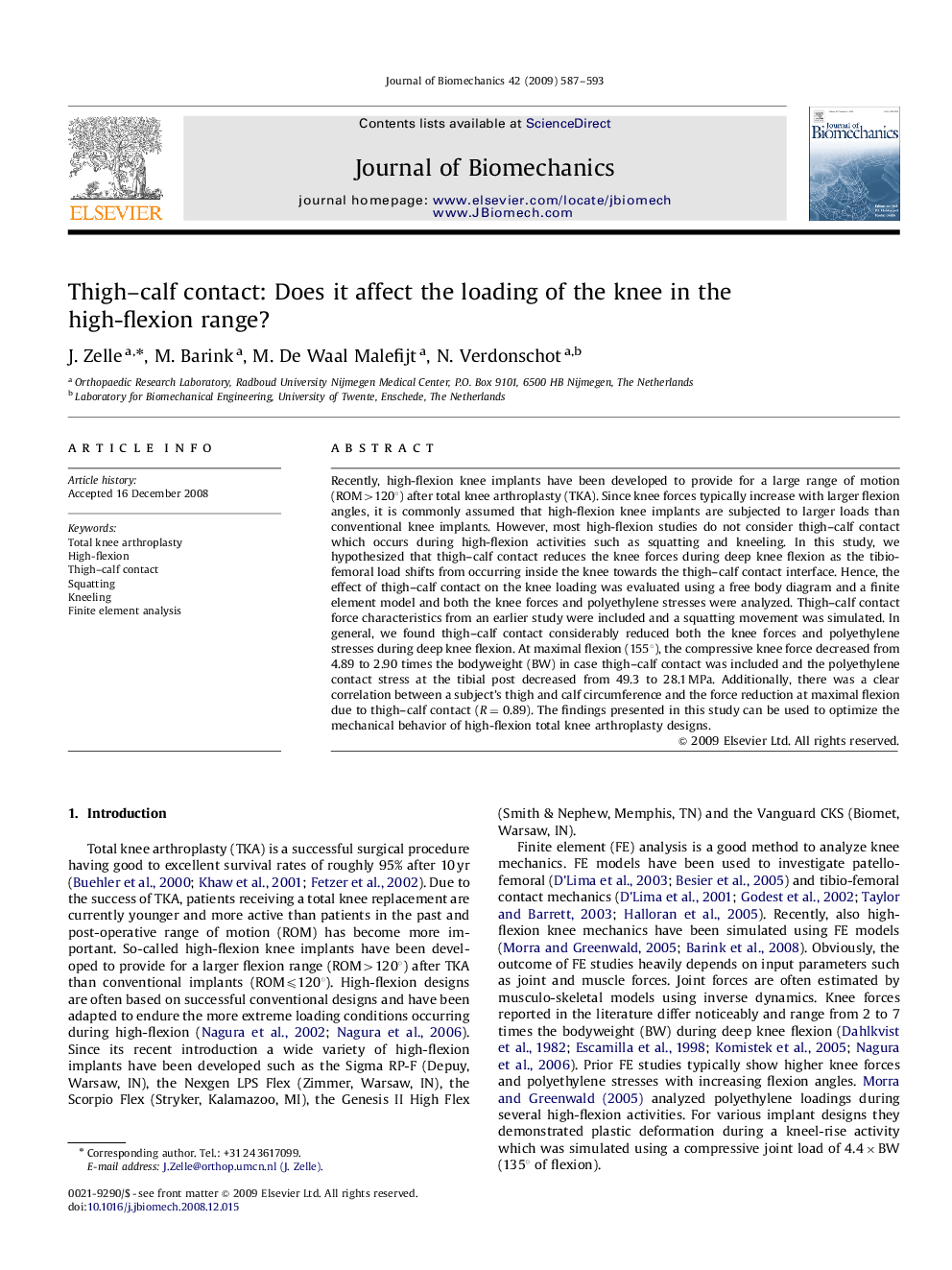| Article ID | Journal | Published Year | Pages | File Type |
|---|---|---|---|---|
| 873609 | Journal of Biomechanics | 2009 | 7 Pages |
Recently, high-flexion knee implants have been developed to provide for a large range of motion (ROM>120°) after total knee arthroplasty (TKA). Since knee forces typically increase with larger flexion angles, it is commonly assumed that high-flexion knee implants are subjected to larger loads than conventional knee implants. However, most high-flexion studies do not consider thigh–calf contact which occurs during high-flexion activities such as squatting and kneeling. In this study, we hypothesized that thigh–calf contact reduces the knee forces during deep knee flexion as the tibio-femoral load shifts from occurring inside the knee towards the thigh–calf contact interface. Hence, the effect of thigh–calf contact on the knee loading was evaluated using a free body diagram and a finite element model and both the knee forces and polyethylene stresses were analyzed. Thigh–calf contact force characteristics from an earlier study were included and a squatting movement was simulated. In general, we found thigh–calf contact considerably reduced both the knee forces and polyethylene stresses during deep knee flexion. At maximal flexion (155°), the compressive knee force decreased from 4.89 to 2.90 times the bodyweight (BW) in case thigh–calf contact was included and the polyethylene contact stress at the tibial post decreased from 49.3 to 28.1 MPa. Additionally, there was a clear correlation between a subject's thigh and calf circumference and the force reduction at maximal flexion due to thigh–calf contact (R=0.89). The findings presented in this study can be used to optimize the mechanical behavior of high-flexion total knee arthroplasty designs.
